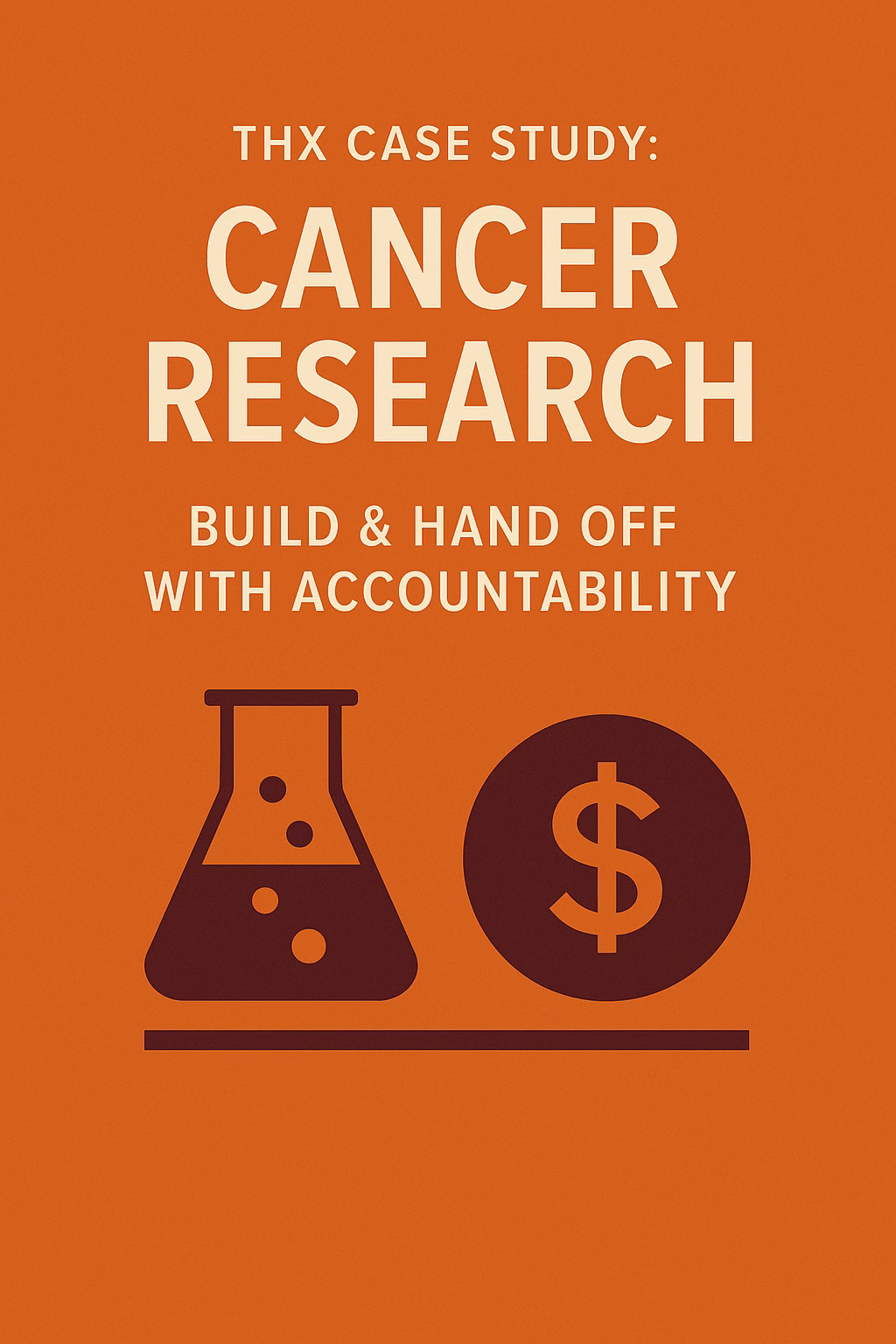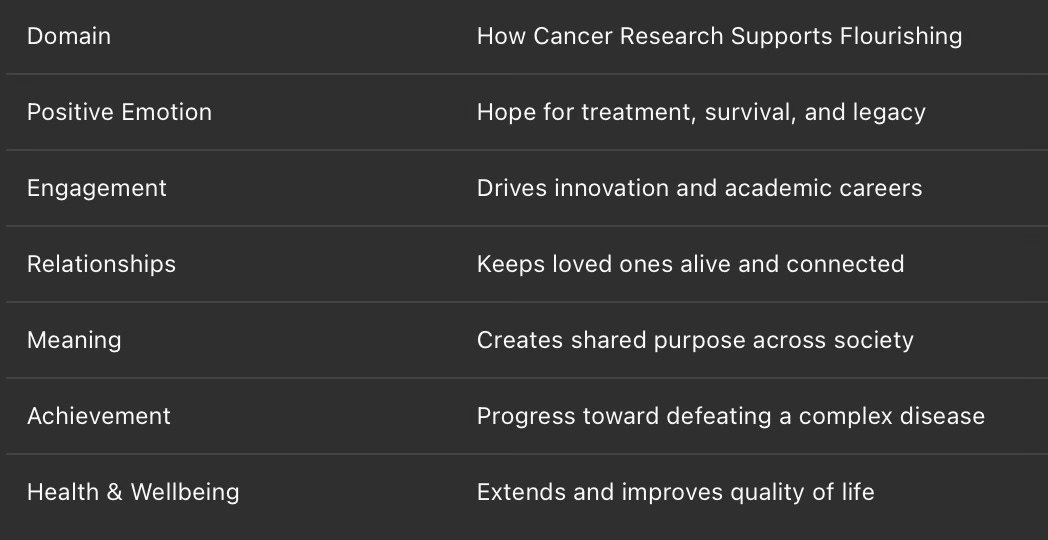From the THX Series Hub: Government That Works
Listen to the podcast here
Exploring what role government should play in advancing cancer research and when private enterprise should take the baton.
What’s at Stake
Cancer is one of the most emotionally and economically devastating diseases in the world. For decades, the U.S. government has played a pivotal role in funding basic research, early discovery, and infrastructure that private companies wouldn’t touch—because the risks were too high and the timelines too long.
But today, many life-saving cancer drugs are developed by private pharmaceutical firms—and often sold at prices inaccessible to many Americans, even when taxpayers helped fund the foundational research.
So the question becomes: Should the government continue to fund cancer research, and if so, how do we ensure that the public gets a return on that investment?
The 12 Utilities
(A tool to measure whether a service is useful, fair, and functional across the things people actually need.)
Verdict: Government excels at long-horizon, high-risk, foundational work. Private enterprise is fast and focused—but not built to serve the whole. A balance is essential.
PERMAH Impact
(A framework from positive psychology that helps us ask if something helps people truly flourish—not just survive.)
The government’s investment enables PERMAH for researchers, patients, families, and entire communities.
Prospect Theory: What’s the Risk of Doing Less?
(A reminder that people feel losses more strongly than gains—so taking something away often hurts more than adding something helps.)
A slowdown in public funding could stall next-generation discoveries.
Handing too much to private industry creates loss aversion—people fear losing access to life-saving treatments more than they appreciate new ones.
The perception of unfairness grows when treatments born from public funds become inaccessible due to pricing.
Admiration Equation
(Explains how people build lasting loyalty through skill, goodness, awe, and gratitude—not just results.)
Skill: Government-funded labs created immunotherapy foundations, mRNA platforms, and cancer genome mapping.
Goodness: Investing in the health of strangers is collective moral action.
Awe: Cancer Moonshot projects have inspired breakthroughs once thought impossible.
Gratitude: Millions owe their lives to trials, discoveries, and policies made possible by public funds.
Micro-Moments
(The little experiences that shape how people feel, trust, and remember a service—or a system—for life.)
A mother finishing treatment in time for her child’s graduation.
A first clear scan after years of fear.
A young researcher receiving her first NIH grant.
These moments are priceless. They’re not always driven by profit—but by persistence, purpose, and shared hope.
Global and Market Comparisons
U.S. leads the world in oncology R&D due to robust government investment in basic science.
Europe’s pricing controls often make drugs more affordable but can slow availability.
Private equity in health care is growing, raising concerns about consolidation, access, and affordability.
Real-World Data and Stories
NIH & NCI Funding:
The National Institutes of Health (NIH) invested over $7 billion in cancer research in 2023, with the National Cancer Institute (NCI) receiving the largest share.
NIH funding supported thousands of grants to universities, hospitals, and independent labs—much of it for early-stage discovery that is too risky or unprofitable for private firms.
Breakthroughs Born from Government Funding:
CAR-T cell therapy was enabled by NCI-funded researchers who spent decades studying immune system behavior.
The Cancer Genome Atlas (TCGA), a federal initiative, mapped key genetic mutations in over 30 cancer types and laid the foundation for personalized medicine.
mRNA vaccine technology, now widely known for COVID, was originally funded through NIH grants targeting cancer immunotherapy.
Private Sector Controversies:
Provenge, a prostate cancer treatment, cost over $90,000 per patient when launched, pricing many out of access—even though early-stage research was NIH-funded.
Imbruvica, a leukemia drug partly developed with public funding, brought in billions for its parent company while patients and insurers faced steep costs.
There is no required mechanism for private companies to return profits or offer affordable pricing on drugs that were built on public discoveries.
What This Reveals:
The system works best when government seeds innovation and industry delivers scale, but fairness must be built into the hand-off.
Without accountability, taxpayer investments create private riches without public returns.
Final Thought
Cancer research is a textbook case for Build and Hand Off—with guardrails. Government should fund what the private sector won’t, especially early-stage and rare disease research. But when private companies succeed from public investment, there must be accountability:
Fair pricing models
Profit-sharing mechanisms
Continued access for all
Cancer doesn’t care who discovers the cure. But we should care who gets to afford it.

Interpretation:
This visual captures the balance between long-term public vision and short-term market action. It reminds us that life-saving innovation doesn't happen in a vacuum—and neither should its profits.





